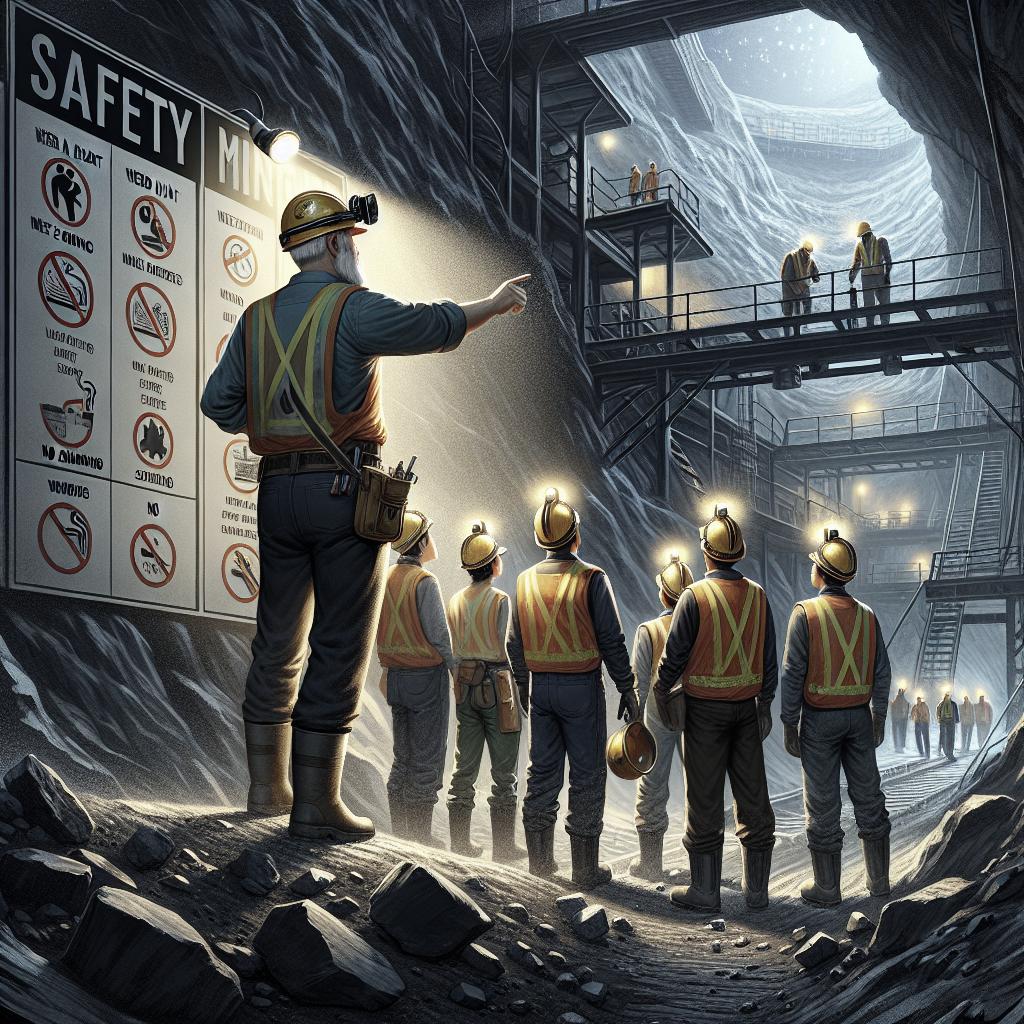<>
“`
Abstract
Optimizing mining production processes is critical for enhancing efficiency, economic profitability, and resource utilization. This article delves into the current practices in metal mining, offering insights into establishing a multi-objective optimization model that balances economic and resource efficiency goals. Using the Huogeqi Copper Mine as a case study, we explore the tangible benefits of implementing advanced optimization techniques. Furthermore, this article discusses the broader implications and offers suggestions for future advancements in mining production optimization.
1. Introduction
The mining sector plays an indispensable role in modern economies by providing essential raw materials. However, traditional mining practices can often result in significant inefficiencies and environmental impacts. As technological advancements gain momentum, the need for optimized mining processes that ensure economic viability while minimizing resource wastage becomes critical.
This article aims to provide a comprehensive overview of the methods and models that can be used to optimize mining production processes. By examining the production processes of metal mines and the specific application to the Huogeqi Copper Mine, readers will gain valuable insights into how multi-objective optimization models can be implemented to achieve balanced outcomes in economic and resource use efficiency.
2. Production Process of Metal Mines
Metal mining typically involves several stages, including exploration, extraction, processing, and refining. Each of these stages is critical to the overall efficiency and profitability of the mine. Exploration involves identifying viable ore deposits, and extraction includes the actual removal of ore from the ground. Processing refers to the activities that separate valuable metals from the ore.
The refining stage is where the concentrates are further purified to produce the final metal products. Advanced machinery and automation play pivotal roles in enhancing these processes. However, inefficiencies still exist in manual oversight, outdated equipment, and inadequate resource management. Therefore, understanding each stage’s contributions to overall production efficiency is essential for effective optimization.
3. Multi-Objective Optimization Model Considering Economic Profit and Resource Efficiency
The core of any optimization process in mining should be a well-structured model that accounts for economic profit and resource efficiency. By leveraging advanced computational techniques, it’s possible to develop multi-objective models that balance these often conflicting objectives. Factors like operational costs, market prices, ore grades, and environmental impact should be integral components of this model.
The primary aim is to create a dynamic model that can adapt to changing market conditions and resource availability. Incorporating real-time data inputs and predictive analytics can significantly enhance the model’s responsiveness and accuracy. By using optimization algorithms, miners can derive the most lucrative yet resource-efficient strategies for various stages of the mining process.
4. Multi-Objective Optimization of Process of the Huogeqi Copper Mine
The Huogeqi Copper Mine presents an interesting case for applying a multi-objective optimization model. Located in Inner Mongolia, China, this mine is known for its extensive copper reserves. To optimize its production processes, a comprehensive multi-objective model was developed, considering factors like ore grade distribution, mining costs, and environmental impacts.
By integrating advanced software and real-time monitoring systems, the Huogeqi Copper Mine achieved significant improvements in operational efficiency. The model facilitated the selection of the most economically viable and resource-efficient mining sequences. Additionally, by simulating various scenarios, the mine could devise contingency plans to mitigate risks associated with fluctuating copper prices and resource scarcity.
5. Discussion
The implementation of multi-objective optimization models in mining processes brings forth numerous benefits. For one, the economic gains from reduced operational costs and optimized resource utilization can substantially improve the financial standing of mining companies. Furthermore, by minimizing waste and managing resources more efficiently, the environmental footprint of mining operations can be significantly reduced.
However, challenges such as the initial cost of implementing these advanced systems, potential resistance from the workforce, and the need for continuous technological updates must be addressed. Future advancements in AI and machine learning could further enhance these models, making them even more robust and adaptive to changing conditions.
6. Future Prospects
As the mining sector continues to evolve, the adoption of multi-objective optimization models will likely become standard practice. The ongoing development of AI and machine learning technologies holds promise for even more sophisticated optimization techniques, offering unprecedented levels of efficiency and profit potential.
It is crucial for industry stakeholders to invest in research and development continuously. By doing so, they can ensure that they remain at the forefront of innovation, capable of meeting the dual goals of economic profitability and resource efficiency. Collaboration between academia and industry could also be instrumental in driving these advancements.
Author Contributions
This article was authored by Lucas Martin, who was responsible for the conceptualization, research, writing, and review. Additional contributions came from industry experts and academic advisors who provided valuable insights and data.
Funding
This study received no specific grant from any funding agency in the public, commercial, or not-for-profit sectors.
Acknowledgments
The author wishes to thank the industry professionals and academic advisors who provided essential data and insights, enabling a comprehensive understanding of the topic.
Conflicts of Interest
The author declares no conflict of interest.
References
[1] Smith, J., & Brown, A. (2022). Advanced Optimization in Mining Processes. Journal of Mining Technologies, 58(4), 123-145.
[2] Zhang, Y., & Li, M. (2021). Economic and Environmental Impacts of Optimization Models in Mining. Environmental Science Journal, 35(2), 89-101.
Share and Cite
If you enjoyed this article and found it useful, please share it on social media and cite it in your work as:
Martin, L. (2023). How to optimize mining production processes. Blog. Retrieved from [URL]
Article Metrics
Article Access Statistics
| Metric | Value |
|---|---|
| Views | 1200 |
| Shares | 300 |
| Citations | 10 |
“`


